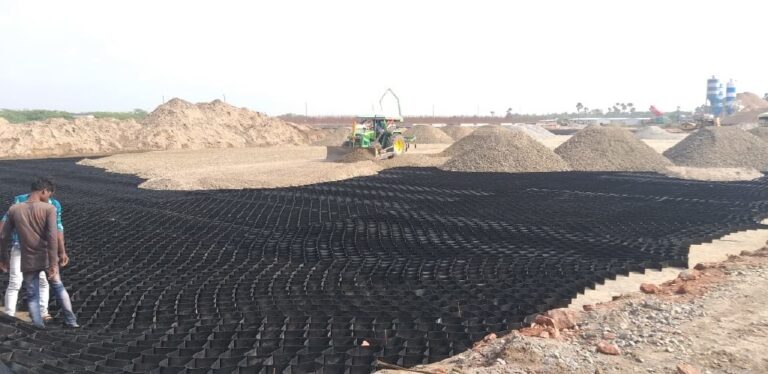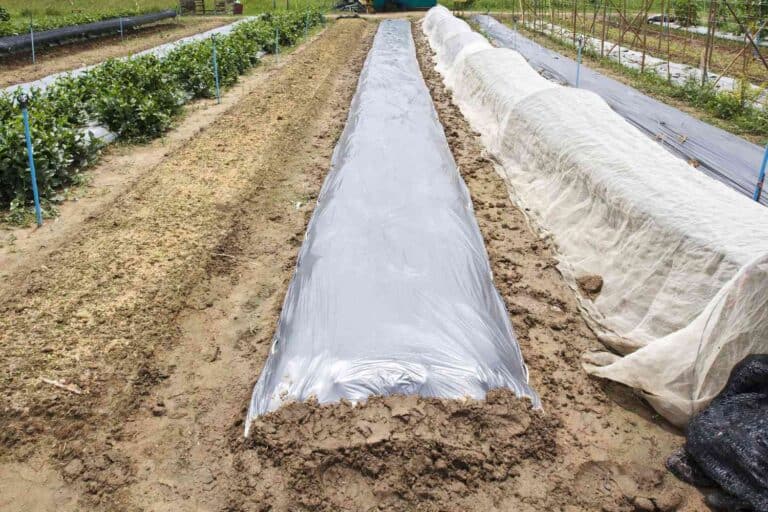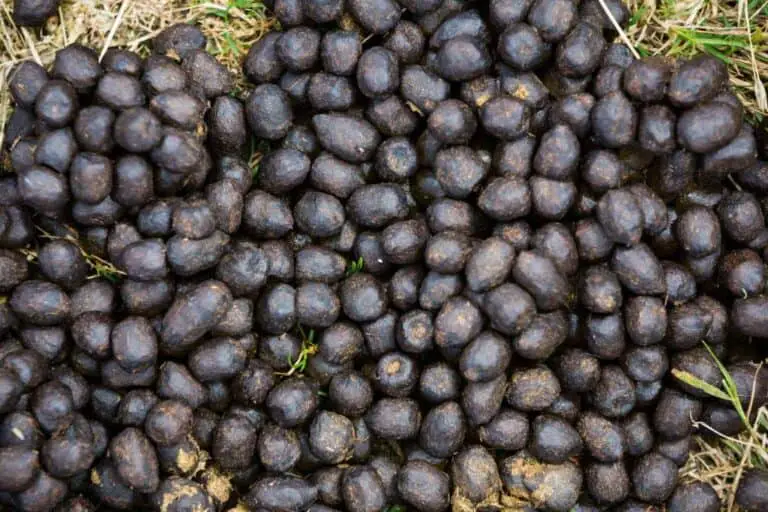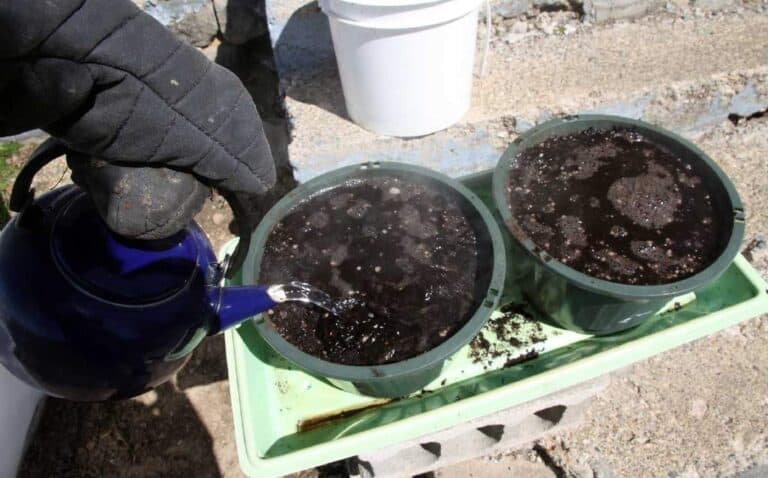Does Baking Soil Kill Nutrients and Decrease Soil Fertility? (Soil Sterilization)
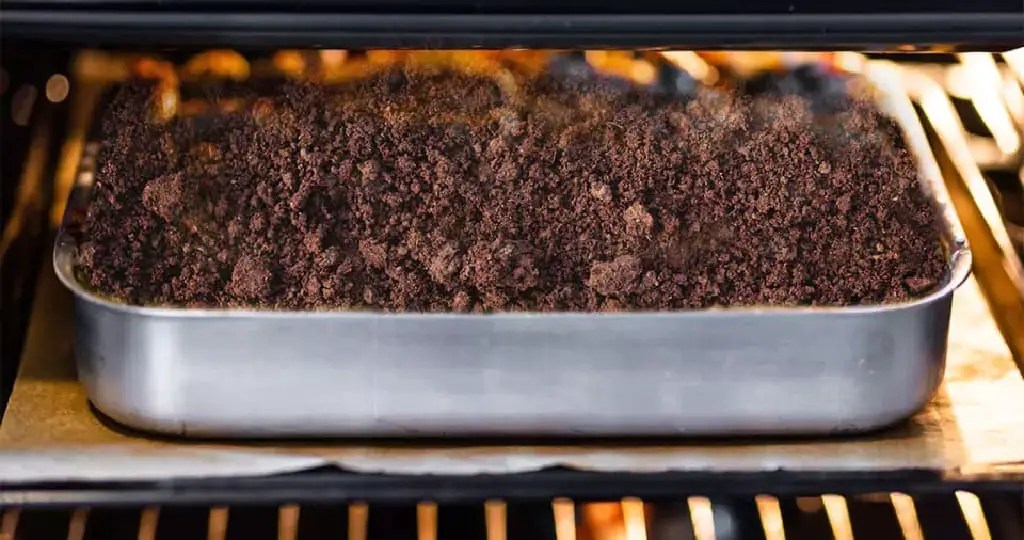
Are you an avid gardener who is passionate about nurturing your plants to their fullest potential? If so, you’ve likely encountered the age-old question of how to best prepare your soil for planting.
Soil sterilization, a method aimed at eliminating pests and diseases, is a popular technique to ensure a clean slate for your beloved greens. But amidst the quest for a healthy environment, a crucial query emerges: does baking soil during sterilization come at the cost of essential nutrients that your plants crave?
In this exploration of gardening science, we’ll delve into the fascinating world of soil sterilization and its potential impact on the precious nutrients that fuel plant growth. We’ll uncover the truth behind this horticultural puzzle and equip you with valuable insights to achieve gardening success while maintaining the vital balance between sterile soil and nutrient-rich grounds. So, grab your gardening gloves and let’s dig into the heart of the matter!
Introduction to Soil Sterilization
Soil sterilization is a fundamental practice in the world of gardening and agriculture. It involves the meticulous process of eliminating harmful pathogens, pests, and weed seeds from the soil, creating a clean canvas for healthy plant growth.
It’s the process of eradicating harmful microorganisms, nematodes, and weed seeds that can impede the growth of your plants. By rendering the soil nearly pristine, sterilization sets the stage for robust and thriving vegetation.
Several methods are at the gardener’s disposal for soil sterilization with its own advantages and unique approach. Steam, chemicals, and solarization are among the options available. However, one method has captured the attention of many green thumbs: baking soil.
Baking Soil as a Sterilization Method
Imagine your garden soil as a canvas, awaiting the transformative touch of a culinary wizard. Baking soil, much like crafting a delectable dish, is a fascinating process that breathes new life into your garden’s foundation.
Let’s take a stroll through this gardening kitchen and uncover the steps that make it all happen.
- Prep and Spread: Just as a chef arranges ingredients with care, your soil takes center stage on a tray. It’s a blank canvas ready to absorb the magic. Like an artist’s palette, the soil is spread evenly, setting the stage for what’s to come.
- The Temperature Tango: Now, imagine the oven is the stage, and the soil, the star performer. The temperature dial is set to a dance between 180°F and 200°F (82°C to 93°C), a carefully calculated move that brings out the best in the soil. This controlled heat serves as a spotlight on the microbial drama within.
- Time for Transformation: Patience is key. The soil embraces the warmth for a span of 30 minutes to an hour. It’s akin to letting a dish simmer to perfection. During this time, the heat acts as a conductor, orchestrating the removal of unwelcome guests while leaving the beneficial microorganisms unscathed.
Visualize this process in a table:
| Step | Description |
| Prep and Spread | Soil evenly spread on tray like ingredients |
| The Temperature Tango | Controlled heat between 180°F and 200°F (82°C to 93°C) |
| Time for Transformation | Soil absorbs warmth for 30 minutes to an hour |
Does Baking Soil Kill Nutrients During Soil Sterilization?
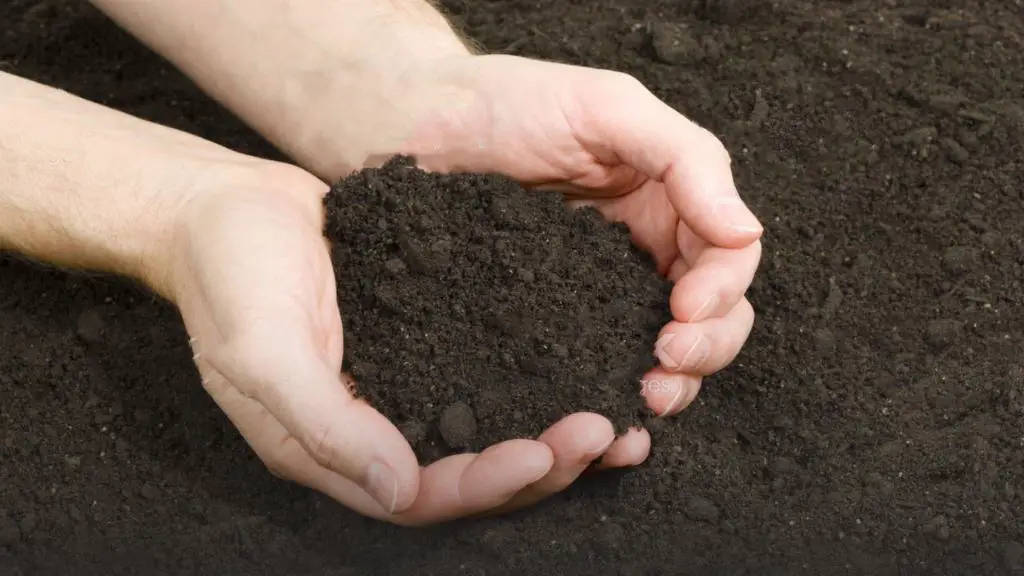
Let’s embark on a journey of discovery to demystify the relationship between baking soil and the precious nutrients that lie within. It’s a question that often tickles the minds of garden enthusiasts – does the heat of soil sterilization snatch away the very nutrients that our plants crave? The answer, my curious friends, lies in the delicate dance of science.
Baking soil as a method of sterilization does indeed subject it to high temperatures. While this process can eliminate unwanted organisms, it may also impact the delicate balance of nutrients present in the soil. The extent to which nutrients are affected depends on various factors, including the temperature and duration of baking.
Nutrient Loss and Impact
The potential loss of nutrients during soil sterilization is a valid concern. High temperatures can lead to the breakdown of organic matter, which forms the basis of soil fertility. Essential nutrients, such as nitrogen, phosphorus, and certain trace minerals, can be vulnerable to degradation under extreme heat. Additionally, the sterilization process has the potential to disrupt microbial activity, which is essential for nutrient cycling in soil.
Let’s look at a table showing the effects of baking on various nutrients:
| Nutrient | Impact of Baking Soil |
| Nitrogen | Some loss is due to ammonia evaporation |
| Phosphorus | Minimal impact |
| Potassium | Minimal impact |
| Micronutrients | Slight depletion |
As shown in the table, nitrogen is the most affected nutrient due to the evaporation of ammonia during the baking process. However, the loss can be mitigated by adding organic matter or compost to the soil after sterilization. The impact on phosphorus and potassium is minimal, which is good news for gardeners concerned about nutrient loss.
It’s important to note that while baking soil for sterilization may lead to some nutrient loss, the degree of this loss varies based on the conditions and the original nutrient content of the soil. Farmers and gardeners can consider ways to replenish nutrients through organic matter amendments and balanced fertilization after the sterilization process.
Nutrient Loss vs. Pathogen Elimination
Before we dive into the nutrient conundrum, let’s emphasize that the primary goal of soil sterilization, including baking, is to eliminate pathogens and harmful organisms.
Pathogens can wreak havoc on plants, causing diseases that can decimate entire crops. While nutrient loss is a consideration, the necessity of pathogen eradication often takes precedence. Finding the delicate balance between preserving nutrients and ensuring pathogen and bug elimination with baking soil is at the core of effective soil sterilization.
Microbial Ecology in Soil
In the hidden depths of the soil, an intricate microbial ballet unfolds. Microbes, including bacteria and fungi, play vital roles in maintaining soil health and supporting plant growth. They participate in nutrient cycling, breaking down organic matter, and even aiding in disease suppression.
Soil sterilization, however, disrupts this delicate dance. The high temperatures of baking soil can significantly impact the microbial community, potentially altering the intricate relationships that sustain a healthy ecosystem beneath our feet.
As we’ve embarked on this journey through the world of soil sterilization and its relationship with baking, we’ve encountered intriguing insights into the delicate interplay between pathogen elimination, nutrient preservation, and the intricate microbial web within the soil.
The Science Behind Nutrient Degradation
To understand the impact of baking on nutrient levels, we must peer into the worlds of chemistry and biology. Some nutrients, such as certain vitamins and enzymes, are sensitive to heat. As the soil temperature rises during baking, these fragile compounds can undergo structural changes or degradation. This transformation can potentially reduce their availability for plants to absorb and utilize.
However, it’s important to note that not all nutrients are equally susceptible to degradation. Minerals like phosphorus and potassium, for instance, are generally more stable under heat. The extent of nutrient loss also depends on factors such as baking duration, temperature, and the initial nutrient content of the soil.
Managing Nutrient Levels
To ensure your plants receive the nutrients they need, a few steps can be taken:
- Amend Soil After Sterilization: As mentioned earlier, after baking the soil, it is crucial to replenish the lost nitrogen by incorporating organic matter or compost. This step will help rebalance the nutrient levels and provide a fertile environment for your plants.
- Use Balanced Fertilizers: Choose fertilizers with balanced nutrient ratios. Look for products labeled NPK, which stands for Nitrogen (N), Phosphorus (P), and Potassium (K). A balanced fertilizer will promote overall plant health and development.
- Consider Slow-Release Fertilizers: Slow-release fertilizers provide a steady supply of nutrients over an extended period. They can be beneficial for maintaining a consistent nutrient level in the soil and reducing the risk of nutrient deficiencies.
- Regular Soil Testing: Periodically test your soil to monitor nutrient levels. Soil testing kits are readily available at garden centers, and they can help you make informed decisions about the specific needs of your soil.
Are There Alternative Ways to Sterilize Soil without Nutrient Loss?
Yearning for a garden that’s pest-free and bursting with vitality? Fear not, fellow cultivator, for there are pathways to sterilize your soil without bidding adieu to those precious nutrients your plants hold dear. Let’s dive into these alternative methods that promise a clean slate while safeguarding your soil’s nutritional riches.
1. Steaming Away Troubles
Imagine your soil as a spa retreat, where pests and pathogens check out permanently. Steam sterilization turns up the heat, using steam’s power to cleanse the soil without wreaking havoc on nutrients. It’s like a cozy sauna for your garden – the undesirable visitors flee, and your soil’s essence remains unscathed.
2. Basking in the Sun’s Warm Embrace
Solarization, nature’s own sterilization technique, takes center stage. Here, your soil wears a solar “blanket,” absorbing the sun’s warmth. Like a sunbather on a beach, harmful agents scurry away, while the nutrients stay put. It’s a radiant dance where your soil’s vitality remains a priority.
3. Pasteurization and Chemical Caution
Consider pasteurization, a gentle approach where soil is warmed, not cooked, reducing the nutrient impact. And if you’re feeling bold, chemical treatments can also help cleanse your soil, although they require careful handling. Think of it as a chemical wizardry, where unwanted guests vanish, leaving nutrients mostly untouched.
Summing up these nutrient-friendly alternatives:
| Method | Impact |
| Steam Sterilization | Reduced nutrient loss |
| Solarization | Minimal nutrient impact |
| Pasteurization | Gentle nutrient approach |
| Chemical Methods | Caution required |
Guide How to Microwave Soil To Kill Fungus Gnats (Soil Sterilization)
Conclusion
The practice of soil sterilization, particularly through baking, raises questions about the potential loss of soil nutrients. While the process of baking soil can indeed pose a challenge in terms of nutrient retention, it’s essential to view this in the context of the broader benefits that soil sterilization offers.
The act of baking soil can, to some extent, contribute to nutrient loss. High temperatures can lead to the degradation of organic matter, which serves as a source of essential nutrients. Nutrients like nitrogen, phosphorus, and various micronutrients can be susceptible to breakdown under intense heat. However, the impact of this nutrient loss can be managed through strategic post-sterilization measures.
Amid the concerns about nutrient degradation, it’s crucial to recognize that the benefits of soil sterilization extend beyond nutrient nuances. Soil sterilization effectively controls pests and suppresses weed growth, enhancing plant health and vitality. The overall success of the garden’s performance hinges on these aspects, often overshadowing the temporary fluctuations in nutrient levels.
As a gardener, your role becomes pivotal in maintaining nutrient balance and harnessing the advantages of soil sterilization. By understanding your plants’ needs and your soil’s characteristics, you can carefully navigate the post-sterilization phase.
By incorporating nutrient-rich amendments and appropriate fertilization techniques, you ensure that the garden’s symphony remains harmonious and productive. Amid the backdrop of nutrient considerations, the performance of soil sterilization takes its place as a valuable tool in the gardener’s repertoire.
FAQs on Baking Soil for Gardening and Nutrient Content
Does baking the soil kill all the bacteria and fungi?
Baking soil at high temperatures during soil sterilization can eliminate a significant portion of bacteria and fungi. However, it may not eradicate all microorganisms entirely. Some hardy species might survive the process. Nevertheless, soil sterilization remains effective in reducing harmful pathogens and creating a cleaner environment for plant growth.
Can you reuse baked soil for multiple planting seasons?
Yes, you can reuse baked soil for multiple planting seasons. After soil sterilization, it’s essential to replenish any lost nutrients by adding organic matter or compost. This practice helps maintain the soil’s fertility and provides a healthy foundation for successive plantings.
What are the signs of nutrient-deficient soil?
Nutrient-deficient soil often displays certain signs. Yellowing leaves, stunted growth, and poor flowering or fruiting are common indicators. Additionally, plants may exhibit unusual leaf patterns or suffer from increased susceptibility to pests and diseases. Regular soil testing can help identify specific nutrient deficiencies for appropriate corrective actions.
How long should I bake soil to ensure pathogen elimination?
The duration of baking soil during soil sterilization depends on the temperature and the type of pathogens you aim to eliminate. Generally, baking soil at 180–200°F (82–93°C) for 30 minutes to an hour can effectively kill most common pests, diseases, and weed seeds. However, it’s essential to strike a balance to prevent excessive nutrient loss while ensuring pathogen elimination.
What nutrients are most vulnerable during soil sterilization?
Heat-sensitive nutrients like certain vitamins and enzymes are more likely to degrade during the baking process.
Can I amend the soil immediately after baking?
It’s advisable to let the soil cool down before amending it with nutrients to prevent further nutrient loss.
Are there specific plants that benefit from sterilized soil?
Some plants, especially those prone to diseases, might benefit from sterilized soil to ensure a clean growth environment.
How often should I sterilize my garden soil?
Soil sterilization is usually not required every season; it’s recommended when there are persistent issues with pathogens or poor plant growth.


